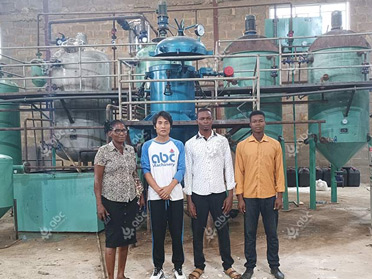"Fish oil" is extracted or manufactured from Marine animals, including mammals, cetaceans, Marine fish, and freshwater fish. In fact, all commercial fish oils in the world, except fish liver oil, are largely extracted from by-products (fish wastes) of fish processing. Most fish meal processing plant produce both fish meal and fish oil. Fish meal can be used for animal feed production and fish oil are generally used for industrial uses.
Nowadays, with the deepening of the research on the edible value of fish oil, people especially realize that fish oil is rich in Omega-3 polyunsaturated fatty acids (PUFA), EPA, DHA and other components, which have beneficial effects on human health. And it has changed the traditional pattern of fish oil production and consumption worldwide. More and more high-value-added fish oil products are developed. (Related Post: How to start cooking oil refinery plant?)
How to Start Fish Oil Processing Business
Fish Oil Extraction and Refinery Project Report
The following listed some of the fish oil extraction and refinery projects we have designed and built before for your references.
This is a complete fish meal processing plant which includes oil extraction and refinery. Click here to see detailed project report of this 50TPD Fish Meal Processing Plant.
The above two projects are about small scale fish oil refinery (what are the main impurities of crude oil?). If you are planning to start small sized fish oil manufacturing business (1-10 ton/day production line), you can take the above projects for references. Different capacity, different equipment, different price. If you want to know the exact cost of setting up a fish oil production plant, don't hesitate to send us an inquiry!
Fish Meal and Fish Oil Production Process

Fish meal and fish oil processing shown in diagrammatic form.
As seen from the fish meal processing flow shown above, the fish or fish wastes will go through cooking, pressing, liquids and solids separation and fish oil refining process. Whenever you feel interested to know more about fish meal processing or fish oil extraction & refinery, welcome to contact us for FREE Consultation Service.
Global Market of Fish Meal and Fish Oil Production
Each year, about 20 million tons of raw materials come from whole fish, shellfish, wild fish by-products and farmed fish by-products. These raw materials can produce about 5 million tons of fish meal, about 1 million tons of fish oil. The trend is not constantly decreasing, and it is not due to overfishing but to the introduction of adaptive stock management practices over the last decade.
Market Supply Trend of Fishmeal and Fish Oil

World’s Fishmeal and Fish Oil Supply (1000 metric tonnes)
As can be seen from the above figure, the overall supply has changed, but on average, it is nearly 5 million tons per year, and fish oil supply is about 1 million tons per year. In recent years, the production has been relatively flat or slightly declined, mainly due to changes in resource management measures.
- From 2007 to 2016, 4.93 million tons of fish meal and 998,000 tons of fish oil were produced.
- From 1997 to 2006, 6 million tons of fish meal and 1.07 million tons of fish oil were produced.
- From 1976 to 2016, 5.7 million tons of fish meal and 1.2 million tons of fish oil were produced.
Referring to the forecasts for future supply in 2019, let's start by looking at what the supply has been over the last few years, and how big the supply will be in 2019. The performance of 2016 is not very good, mainly because of the EI Nino Phenomenon in South Africa, which affects the production of anchovy. As production of the whole anchovy declines, it affects 15% to 20% of the world's total supply. In 2016, global fishmeal production fell to an all-time low, and it rebounded in 2017. This overall supply recovery doesn’t include the omega-3 sector, which has fallen again due to difficulties facing Peru.
| Industrial Grade Forage | Landings Tonnes |
|---|---|
| Gulf Menhaden (Brevoortia Patronus) | 479,000 |
| Atlantic Menhaden (Brevoortia Tyrannus) | 212,000 |
| Sand-eel (Ammodytes spp.) | 486,500 |
| Total 1,175,000 tonnes of which 100% converted. |
| Food Grade Forage | Landings Tonnes |
|---|---|
| Peruvian Anchovy (Engraulis Ringens) | 8,468,000 |
| Japanese Anchovy (Engraulis Japonicus) | 1,567,000 |
| South African Anchovy (Engraulis Encrasicolus) | 228,000 |
| Sprat (Sprattus sprattus) | 262,000 |
| Blue Whiting (Micromesistius Poutassou) | 678,500 |
| Capelin (Mallotus Villosus) | 958,500 |
| Total 12,162,000 tonnes of which an estimated 90% was converted. |
| Prime Food Fish | Landings Tonnes |
|---|---|
| Atlantic Herring (Clupea Harengus) | 656,500 |
| European Sardine (Sardina Pilchardus) | 639,000 |
| Chilean Jack Mackerel (Trachurus Japonicas) | 1,870,000 |
| Japanese Jack Mackerel (Trachurus Japonicas) | 320,000 |
| Chub Mackerel (Scomber Japonicus) | 1,403,500 |
| Californian Sardine (Sardina Sagax caerulea) | 556,000 |
| South African Sardine (Sardina Sagax) | 263,000 |
| Total 5,708,000 tonnes of which an unknown percentage was converted. |
Consumption Trend of Fishmeal and Fish Oil
Anchovy is the main source. The proportion of fishmeal varies from fish meal type to fish meal type. Fishmeal does not come from the whole fish, only 65% is produced from the whole fish. About 35% of global fishmeal is processed from fish wastes, and this proportion will get bigger over time. One main reason is that whole fish are used for direct human use.
Use of Fishmeal

Global Fishmeal Production by Country (1000MT)
Peru, Scandinavia, China, Thailand, Chile, Vietanam, USA, Japan, Other
- 69% for aquaculture.
- 5% for the poultry feed processing.
- 23% for pig feed.
- 3% for pet feed processing and others.
Related post: How to setup a complete fish feed mill plant?
Use of Fish Oil

Global Fish Oil Production by Country (1000MT)
Scandinavia, Chile, Peru, USA, China, Other
- 75% for aquaculture (60% for salmon)
- 18% of humans use it directly
- 7% for Others (enhanced feed production)
Fish Meal and Fish Oil Are Included in EU Animal Feed Legislation
The European food safety authority (efsa) plays a key role in providing independent technical advice to support the approval process for feed additives. The expert group on animal feed for work on the use of additives, products and other substances in animal feed implements EFSA. FEEDAP evaluates and approves applications for new feed additives. The following table is about the EU Feed Raw Materials Directory related with Fishmeal.
| Name | Description |
|---|---|
| Fish | Whole or part of fish: fresh, frozen, cooked, acid treated or dry bathed. |
| Fishmeal | Obtained by heating, pressing, and drying whole or part of fish. Fish dissolved pulp can be added before drying. |
| Fish Dissolved Pulp | A concentrated product that is separated and stabilized during the production of fish meal by acidification or drying. |
| Hydrolyzed Fish Protein | Products obtained by hydrolysis of whole or part of fish by adding acid. Usually dry concentration is adopted. |
| Fish Bone Meal | Product obtained by heating, pressing and drying part of the fish body. It is mainly manufactured from fish bones. |

 Build Your Future!
Build Your Future!































